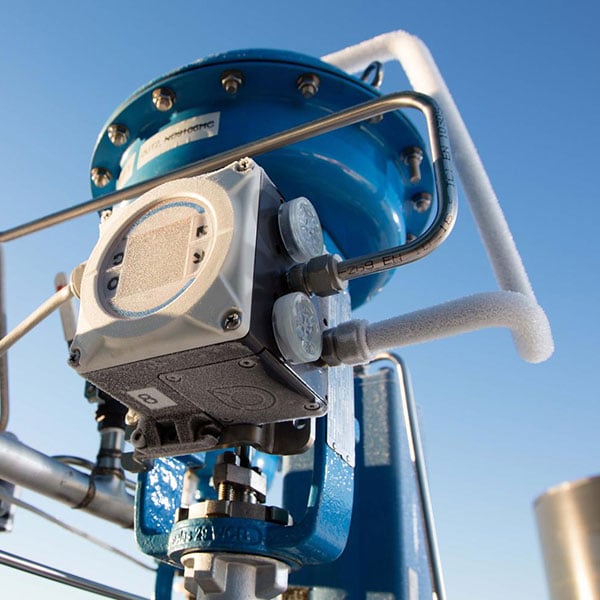The Function of Control Valves in Fluid Circulation Administration Solution
The Function of Control Valves in Fluid Circulation Administration Solution
Blog Article

Maximize Power Savings and Comfort With Advanced Building Automation Controls
In the realm of modern-day architecture and facility monitoring, the integration of innovative structure automation manages stands as a crucial innovation. By utilizing the power of automation, buildings can adapt, respond, and evolve in means that were as soon as inconceivable.
Energy Performance Conveniences
Power efficiency advantages can substantially decrease power consumption and functional prices in buildings. By applying energy-efficient techniques and technologies, structure owners and operators can accomplish significant financial savings while additionally contributing to environmental sustainability. One of the key advantages of improving energy efficiency in structures is the reduction of energy bills. Energy-efficient systems, such as innovative building automation controls, can maximize using sources like lighting, cooling, and home heating, resulting in lower energy costs in time.
Furthermore, improved power efficiency can prolong the life expectancy of building tools and systems. By operating much more successfully, a/c systems, light, and other structure parts experience less deterioration, causing decreased upkeep and replacement expenses. Furthermore, energy-efficient structures often regulate greater property worths and rental rates, providing lasting monetary advantages to owners.
Additionally, energy effectiveness can boost owner convenience and performance. Correctly controlled interior settings with optimum lights and thermal problems produce a more helpful and positive work area, leading to improved worker contentment and performance. Overall, the power efficiency advantages related to advanced structure automation controls are multifaceted, including cost financial savings, ecological stewardship, and resident well-being.
Improved Comfort Control
Enhancing comfort control in building settings requires an advanced assimilation of innovative automation systems for optimum passenger health. By utilizing innovative structure automation controls, centers can customize the indoor setting to fulfill the specific needs and choices of owners. These systems allow exact guideline of temperature level, lighting, and air flow, creating a productive and comfy environment. Owner fulfillment and performance are closely linked to thermal comfort, making it essential to have systems in area that can adjust to changing conditions in real-time.
By incorporating these advanced controls, structures can not just boost comfort but additionally improve power efficiency by optimizing system procedures based on actual tenancy and usage patterns. Eventually, prioritizing passenger comfort with advanced automation systems leads to an extra satisfying and much healthier interior atmosphere.
Functional Efficiency Improvements

Additionally, the execution of real-time tracking and analytics tools makes it possible for building operators to determine energy inadequacies and functional abnormalities immediately. By continually checking see this energy use patterns and system performance metrics, adjustments can be made in real-time to enhance energy usage and make certain peak functional performance. control valves. Furthermore, integrating demand action techniques into structure automation controls can even more enhance operational effectiveness by dynamically readjusting energy usage based upon grid problems and pricing signals
Indoor Climate Optimization
Efficient interior environment optimization is a basic element of building automation controls, making certain passengers' comfort and well-being while making the most of power financial savings. By using advanced sensing units and controls, developing automation systems can continuously keep track of and change temperature, humidity degrees, air high quality, and air flow to create an ideal indoor setting. Keeping regular and comfy problems not only boosts resident satisfaction yet also enhances performance and overall health.
Indoor climate optimization likewise plays a vital function in power performance. By fine-tuning home heating, air flow, and air conditioning systems based upon real-time data and occupancy patterns, constructing automation controls can dramatically reduce power usage - control valves. For example, applying strategies such as demand-controlled ventilation and thermal zoning can aid reduce power waste while making certain that each area of the building gets the essential conditioning.

Sustainable Setting Production
Building automation manages not just optimize see page indoor environment conditions for energy performance and occupant convenience but additionally lay the foundation for developing a sustainable setting through critical monitoring of systems and resources. By incorporating advanced building automation technologies, such as sensing units, actuators, and smart software, centers can keep an eye on and readjust energy usage in real-time to decrease waste and minimize their carbon impact. These systems enable anticipating maintenance, determining possible concerns before they intensify and enhancing tools efficiency to improve long life and effectiveness.
Additionally, lasting atmosphere creation expands beyond power administration to encompass water preservation, waste reduction, and interior air top quality renovation. Building automation controls can regulate water usage, identify leaks, and ensure correct waste disposal techniques, adding to overall sustainability efforts. Additionally, by controlling and keeping track of ventilation and filtration systems, these technologies boost passenger wellness and performance while reducing energy usage associated with HVAC procedures.
Verdict
In conclusion, progressed building automation regulates offer considerable benefits in regards to power cost savings, convenience control, functional efficiency, interior climate optimization, and developing a sustainable environment. By executing these controls, buildings can achieve optimal performance while decreasing power intake and improving occupant comfort. It appears that using innovative automation innovation is critical in enhancing building efficiency and creating a much more lasting future.
Power effectiveness benefits can dramatically reduce power intake and operational costs in buildings. In general, the power effectiveness benefits connected with sophisticated structure automation controls are diverse, encompassing price savings, environmental stewardship, and owner well-being.
Furthermore, integrating demand reaction methods into building automation controls can additionally improve operational efficiency by dynamically changing power usage wikipedia reference based on grid problems and rates signals.
Structure automation regulates not just maximize indoor climate problems for power efficiency and occupant comfort yet likewise lay the foundation for producing a sustainable environment via calculated management of systems and resources.In verdict, advanced structure automation controls offer substantial benefits in terms of energy cost savings, convenience control, functional efficiency, indoor climate optimization, and developing a sustainable setting.
Report this page